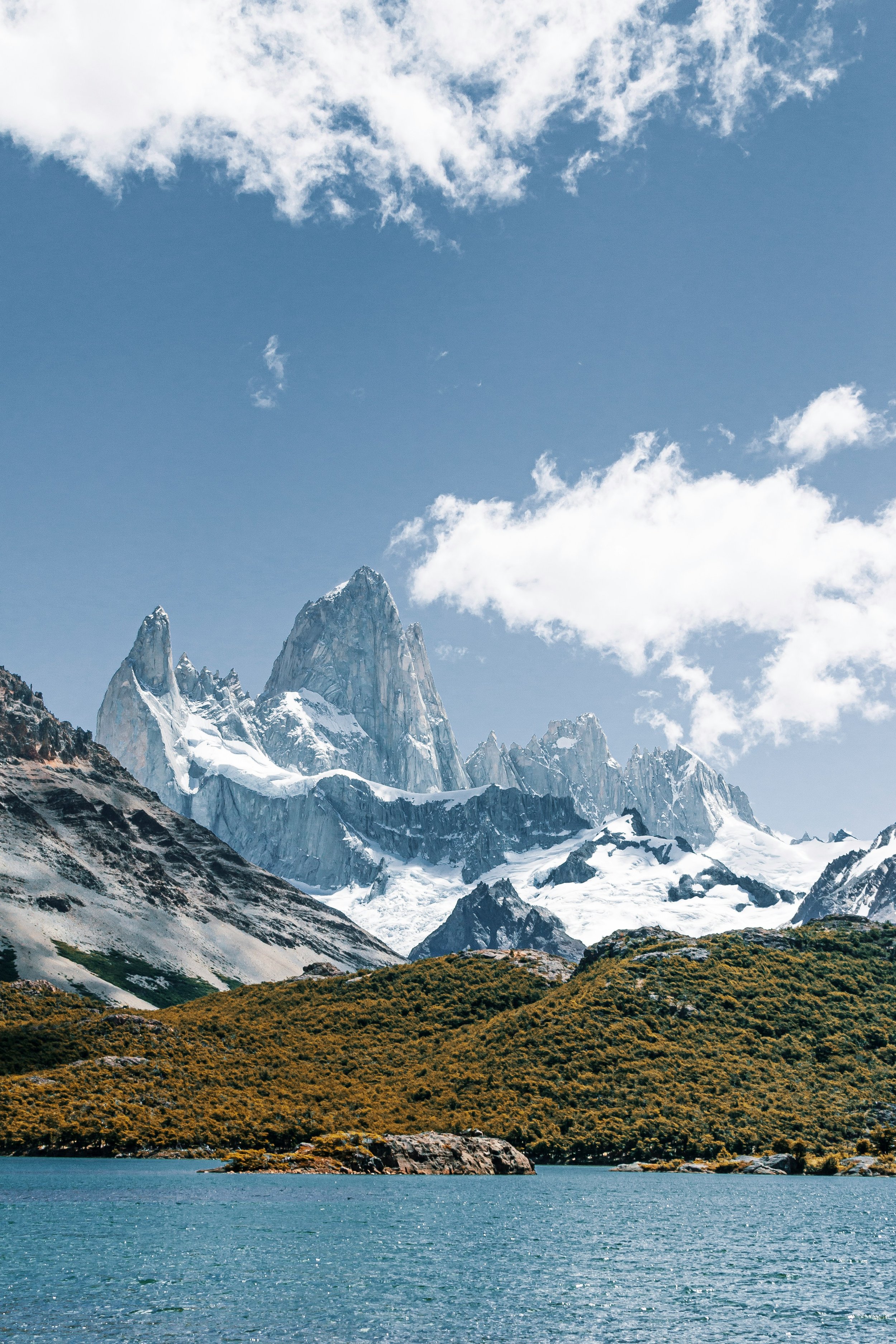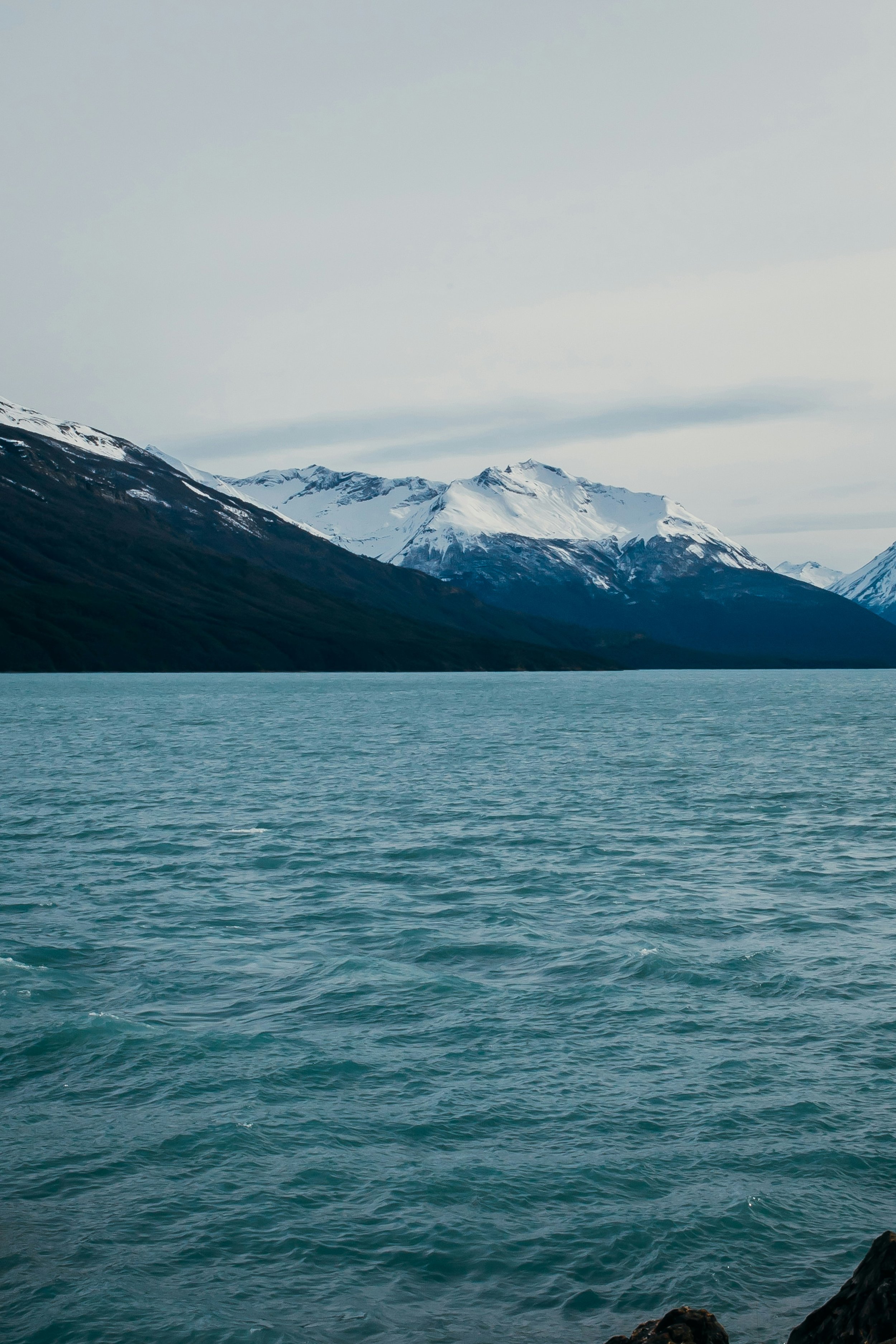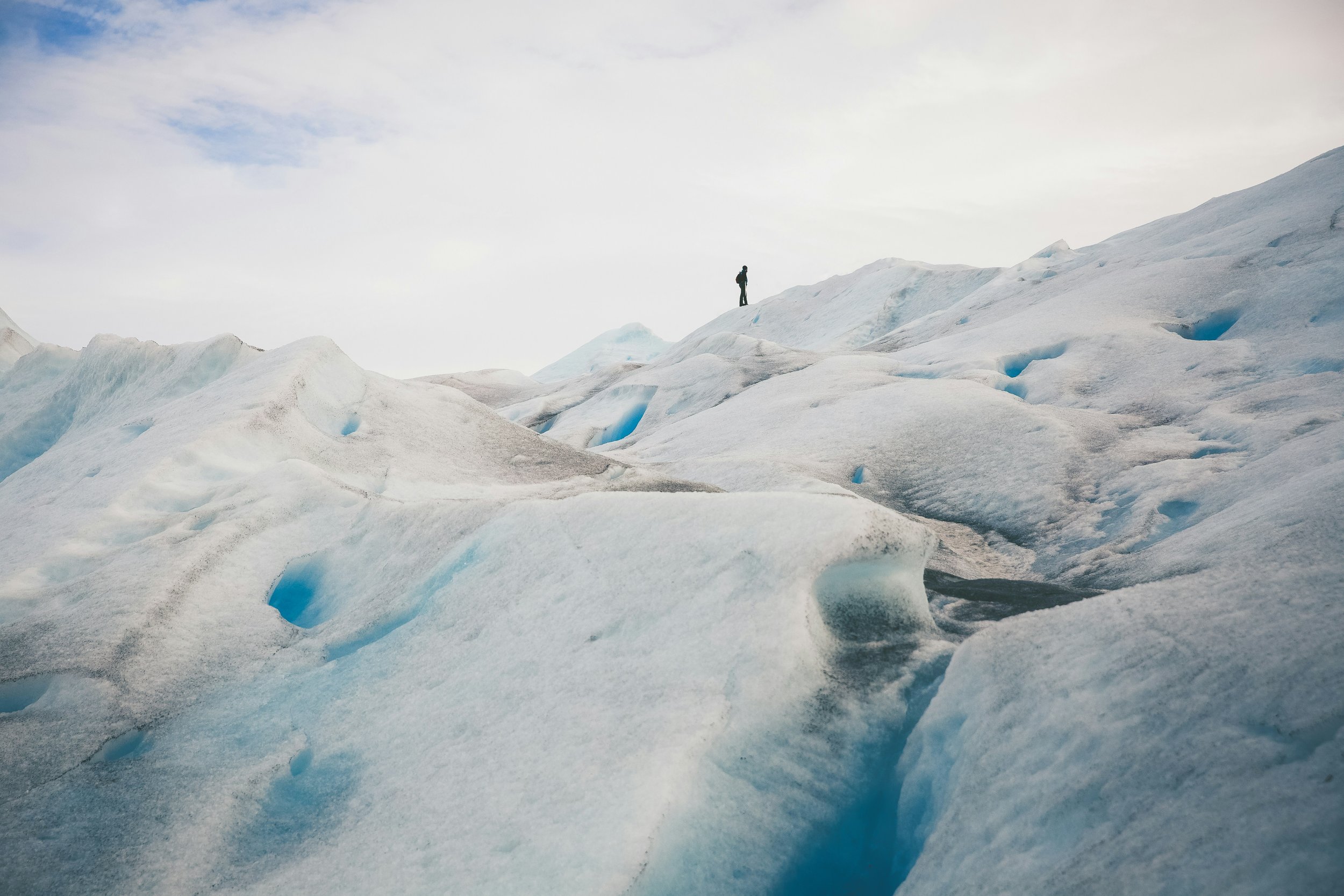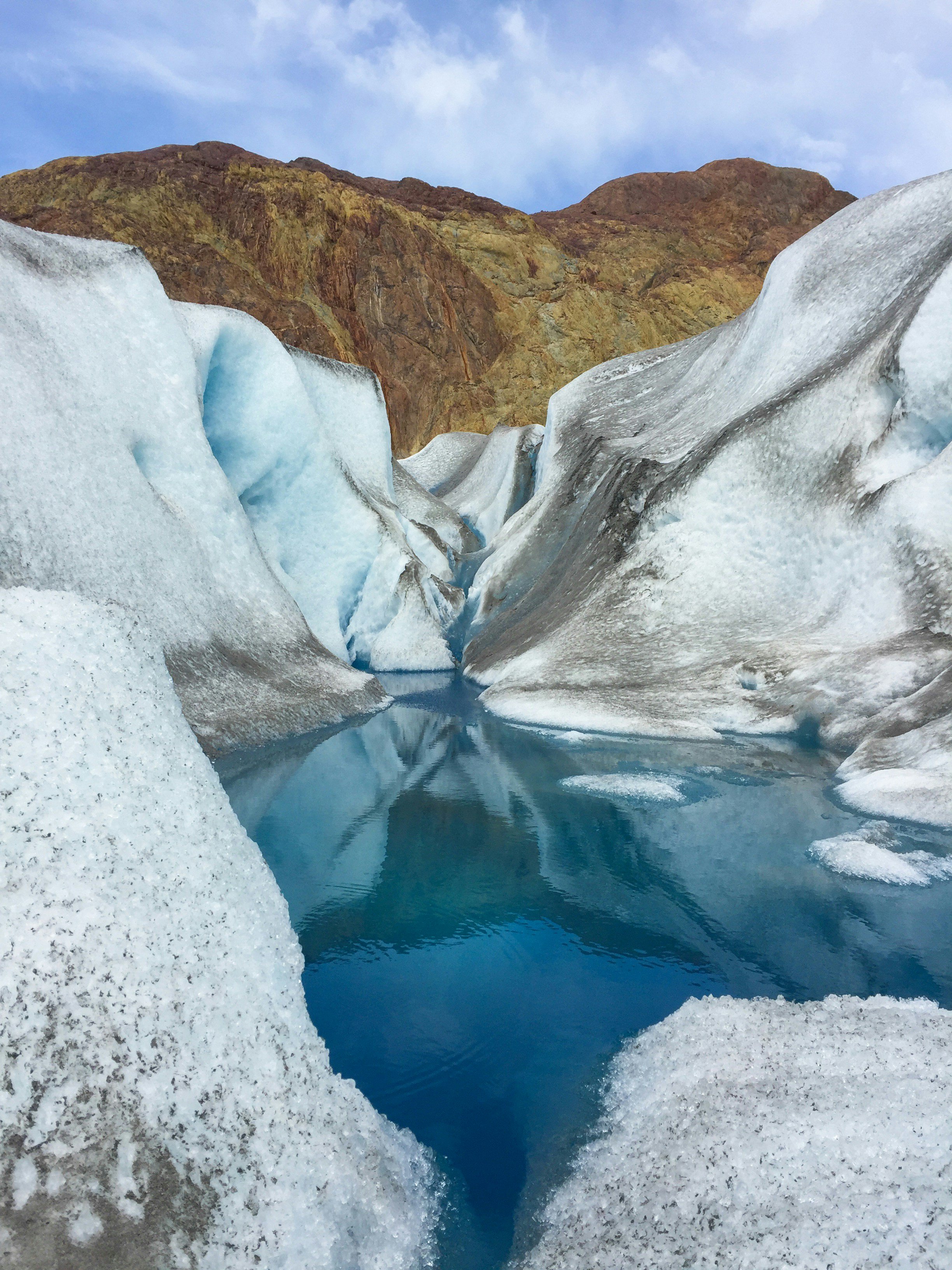
Patagonia, Patagonia,
This is the far south: raw, remote, and quietly spectacular.
A land shaped by glaciers, lenga forests, and the flight of condors. Here, nature takes centre stage: Front and centre stands the mighty Perito Moreno, the trails beneath Fitz Roy, the profound disconnection found in remote estancias, and the iconic granite towers of Torres del Paine.
Patagonia is vast, yet the experience feels intimate.
Adventure takes many forms: legendary treks, horseback rides through wide open valleys, kayaking past drifting icebergs. Or simply being still , reading by the fire, watching light dance across a peak, or surrendering to complete disconnection.
El Calafate is where you’ll likely arrive, a charming town on the edge of Lago Argentino and gateway to Los Glaciares National Park. Here, the mighty Perito Moreno Glacier commands silence. Wander the wooden walkways, get closer by boat or kayak to witness the towering frozen walls up close. Warm up afterwards with Patagonian lamb slow-cooked over fire, artisanal chocolates, and local craft beer.
Most travellers arrive through El Calafate, but 200 km further lies El Chaltén, Argentina’s trekking capital. Backdrop: Fitz Roy , ‘the smoking mountain’. Here, outdoor enthusiasts embark on epic multi-day treks through rugged terrain and past crystal-clear lakes.
But the best way to experience Patagonia is to go deep. Tucked away in this remote wilderness is La Josefina, a secluded estancia surrounded by turquoise lakes and star-filled skies.
Getting there means leaving the pavement behind: a 5-hour scenic drive along Route 40, followed by a 10 km guided trek through untouched terrain. Remote by design, the journey is part of what makes it unforgettable.
Once there, ride with gauchos across open plains, share slow meals by the fire, and wake to silence broken only by the wind and distant birdsong.
Torres del Paine is Patagonia’s a cinematic sweep of granite spires, turquoise lakes, and golden grasslands dotted with guanacos. A UNESCO Biosphere Reserve where every step feels like a privilege. Whether you take on the iconic treks or simply soak up the beauty on scenic drives and short walks, this is Patagonia wild and unforgettable.
What you’ll see & do
Getting there
Most travelers enter Patagonia via El Calafate, with daily 3-hour flights from Buenos Aires. Distances are long — but part of the journey south. And always scenic.
To El Chaltén: 200 km / 3-hour drive on paved roads. ETÉREA arranges private transfers through the scenic steppe.
To La Josefina (Remote Patagonia): We take you on a 5-hour scenic drive along Route 40, followed by a 10 km guided trek. Getting there is part of the adventure
To Torres del Paine (Chile): Fly from El Calafate to Puerto Natales (1 hr, limited flights) or take a 5–6 hr overland transfer. Direct flights from Santiago also available.
Stay
Patagonia’s charm lies in its balance: wild landscapes, quiet luxury, and places that feel deeply connected to their surroundings.
In El Calafate, Eolo offers a refined estancia experience set in the open steppe — vast views, minimal noise, and exceptional food. Nearby, Estancia Cristina is accessible only by boat and rooted in the region’s pioneer past, surrounded by glaciers, horses, and silence.
For a deeper retreat, La Josefina on Lago San Martín is entirely off-grid and reachable only on foot — handcrafted cabins nestled in raw wilderness.
Near El Chaltén, Aguas Arriba Lodge overlooks Lago del Desierto, a secluded mountain lodge reached by boat or trail.
Across the border in Chile, Awasi Patagonia and Explora Torres del Paine offer full-board, guided stays just outside the national park — immersive, well-designed bases for exploring the dramatic landscapes of Torres del Paine.
Worth knowing
Few realize just how immense it is. Patagonia stretches across two countries (and spans over a million square kilometers, larger than France, Italy, and Spain combined. Shared by Argentina and Chile, it’s a region defined by vast, open spaces and striking contrasts: wind-swept steppe, dense forests, towering peaks, and ancient glaciers.
The weather is famously unpredictable. Sun, rain, and snow can all happen in a single day. Layering is essential, as is the mindset to embrace changing conditions.
The name “Patagonia” comes from Patagón, a term used by Magellan in 1520 to describe the Indigenous people he believed were giants. While the legend may have been exaggerated, the scale and mystery of the land remain. This is still a place that feels larger than life.








Let’s fly
Got a journey in mind? Tell us about your ideal trip.
Once we hear from you, we’ll schedule a one-on-one call to get to know you better.
From there, we’ll start designing something uniquely yours.


